Pond weeds are bad news. They can strangle out healthy plants and disrupt a pond’s ecosystem. They can endanger the health of any fish living in a pond. Most weeds also happen to make pond environments look ugly overall. It is important to know about the different types of weeds that commonly grow in ponds so you can quickly identify them if they start to grow in your pond. The sooner that you spot weeds growing, the easier it will be to get rid of them. Here are 18 types of pond weeds that you should know about.

The 18 Types of Pond Weeds
1. Algae
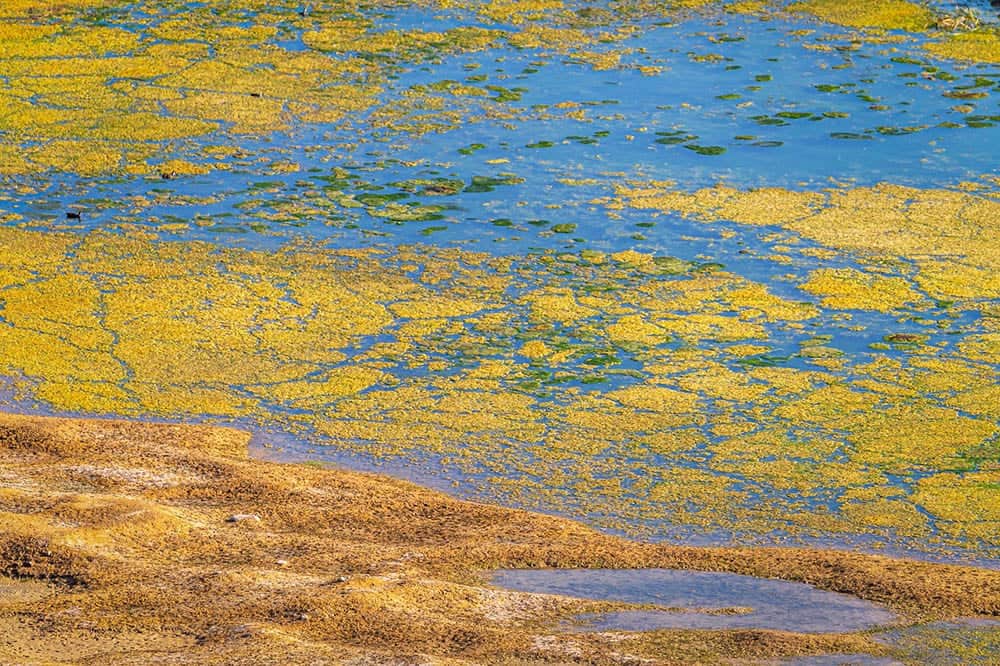
The term algae encompasses a variety of organism types and is commonly found in ponds, lakes, rivers, and streams throughout the world. It is full of chlorophyll and tends to be bright green. It likes to grow on the floor and walls of ponds.
2. Watermeal

This is a rootless weed that floats in standing water and is hard for people to see without close inspection. If watermeal can grow unchecked, it can deplete oxygen levels and endanger any fish that are living in the pond.
3. Watershield

This perennial herb has oval-shaped leaves that float, so it is usually easy to spot with the naked eye. Watershield will not harm a pond unless the plant is allowed to take over. Regular thinning of the herb should take place throughout the year.
4. Duckweed

Duckweed is considered the smallest flowering plant in existence. It flourishes in pond settings and has small, flat leaves and tiny flowers that tend to attract flies, which can be harmful to ponds and annoying for pond owners.
5. Water Lily
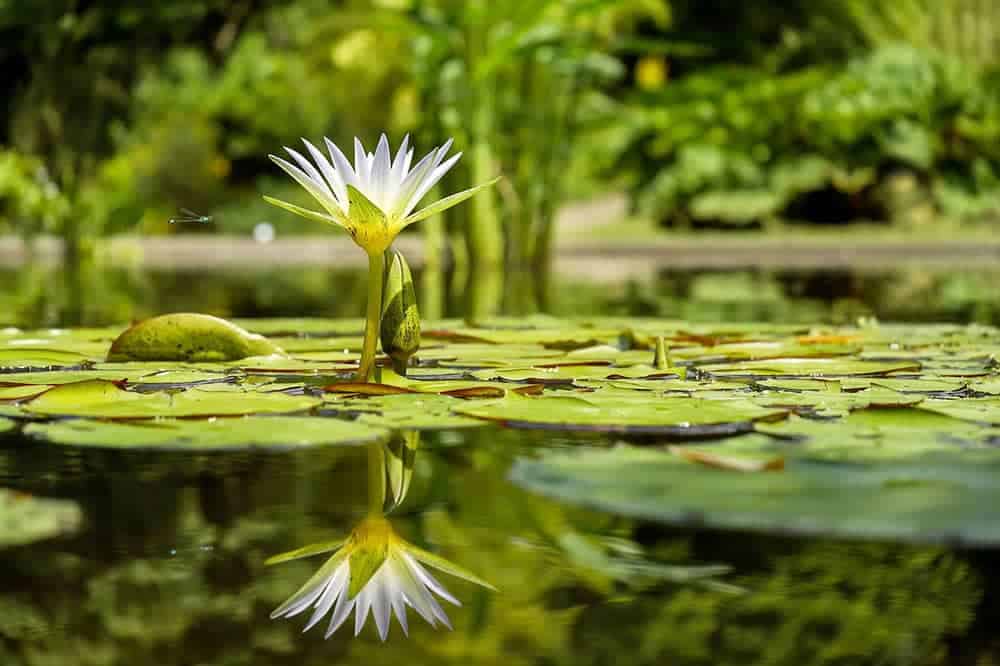
Water lilies are beautiful weeds but they are weeds nonetheless. These plants root into the soil on the bottom of ponds and stretch up to grow on the surface of the water. They rarely take over entire pond ecosystems but should be thinned occasionally to ensure proper sun and oxygen exposure.
6. Coontail
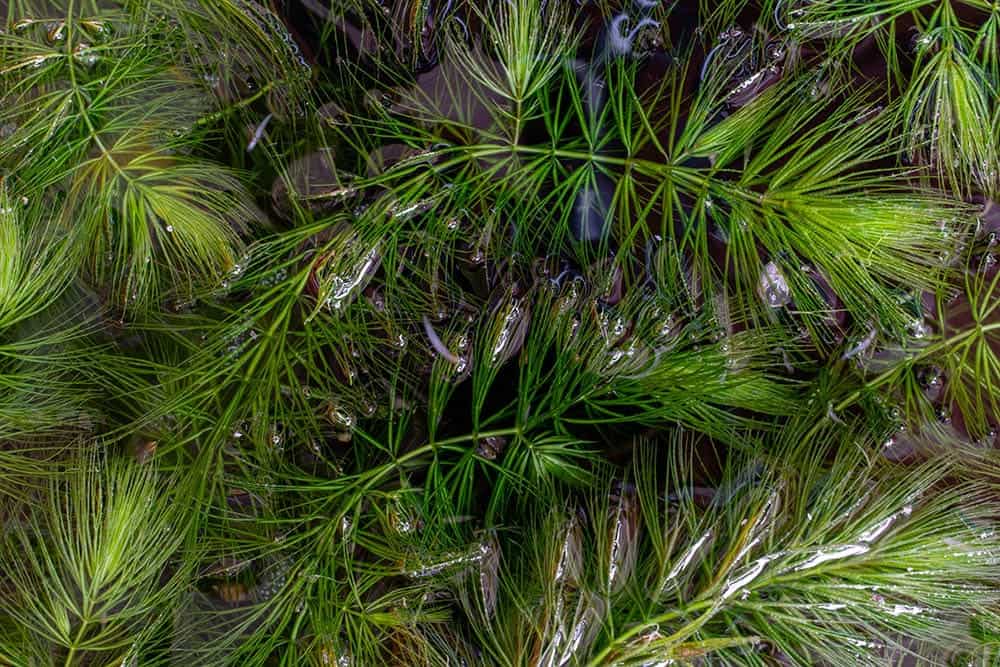
This weed grows below the water surface, where it hides from view. It has no roots and freely floats around as the water circulates. Coontail helps create a comfortable habitat for fish and keep the water clean, but it does need to be managed to ensure that it does not overrun the pond.
7. Cattail
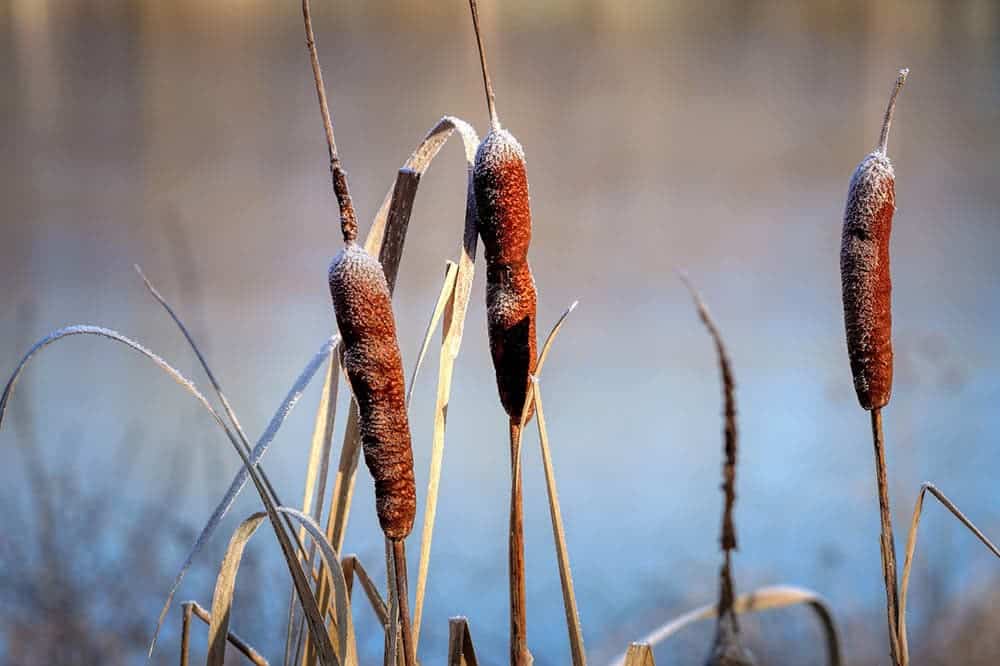
Cattails typically grow around the perimeter of ponds and other bodies of standing water. They stand tall and erect and can either inhibit views of the pond or enhance the pond’s overall ambiance, depending on exactly where they grow and how many there are.
8. Bulrush

This wild plant helps purify water and can be used to weave items such as storage bowls and wall artwork. Bulrushes look similar to cattails, but they tend to grow in deeper water and can grow in the middle of a pond, whereas cattails only grow around the perimeter in shallow water.
9. Milfoil
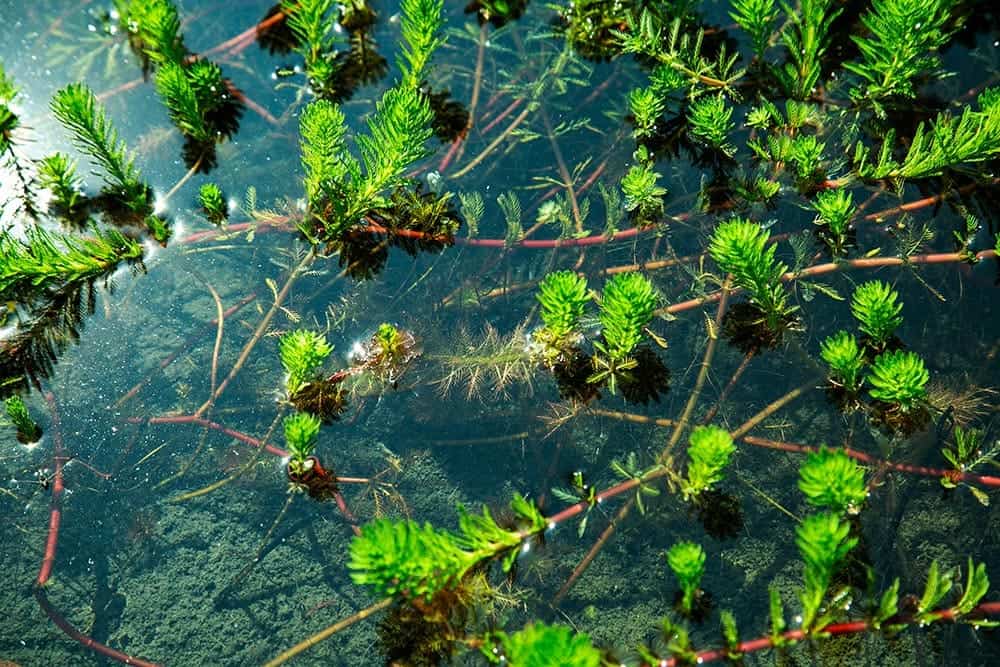
Considered an invasive species, milfoil can be found in ponds, lakes, and streams throughout the United States. Unfortunately, this weed grows densely along the edges of ponds, making access to the water tough, whether for fish caretaking or pond management.
10. Hydrilla
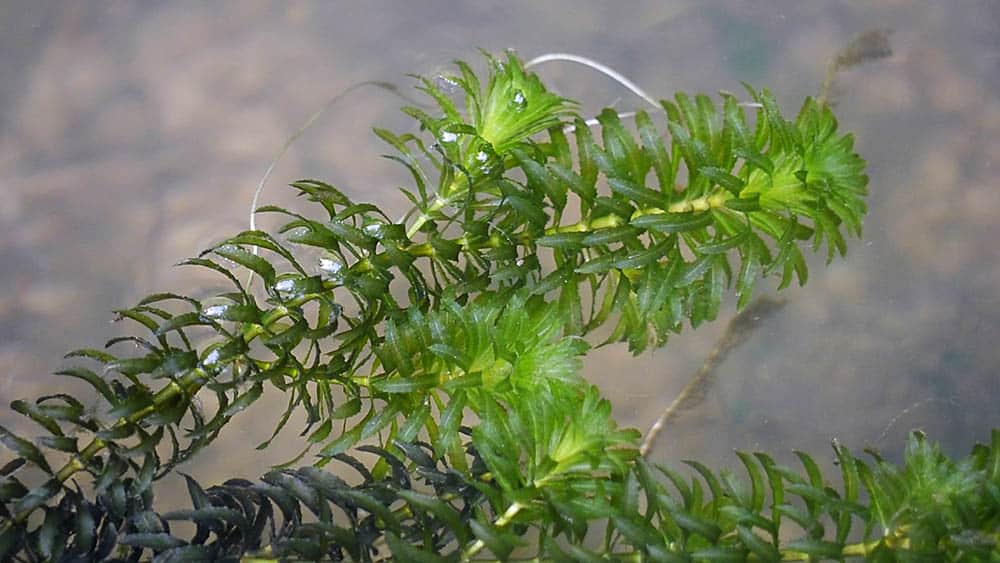
Hydrilla has invaded ponds and lakes in almost all continents throughout the world. The plant inhibits waterways from flowing and can keep pond water from properly circulating. It can also make the water quality poor, which is dangerous for fish and other types of plants living in the pond.
11. Water Lettuce

This floating plant can add character and charm to a pond, but it can also completely take over the surface and stop the sun from entering the environment. Once it takes over, it can be tough to get rid of, so eradication at the first sign of growth is essential.
12. Water Hyacinth
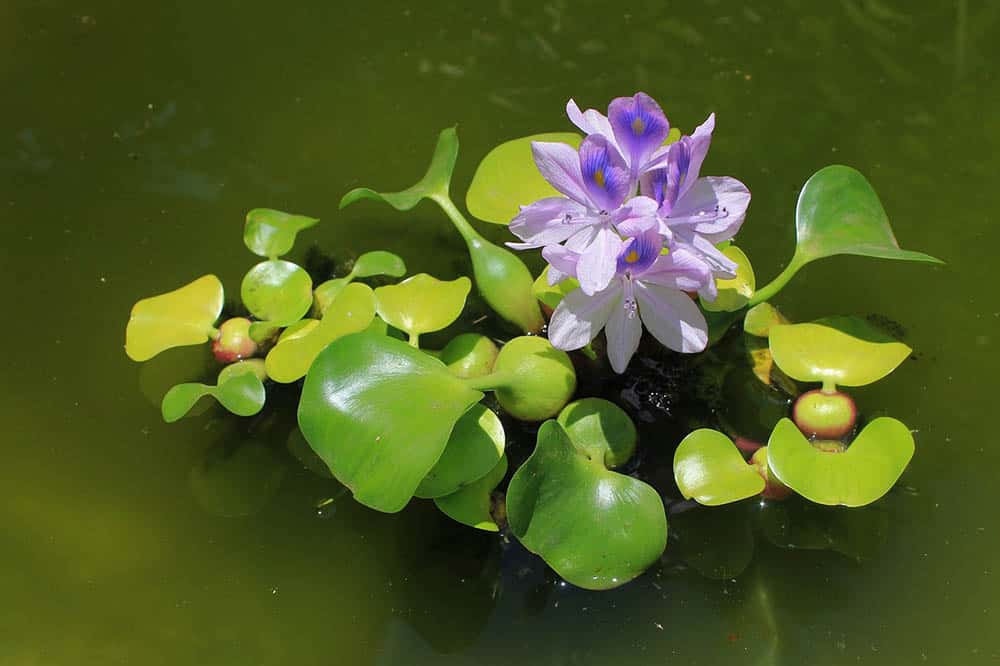
If your pond does not house fish or other plants, water hyacinth can create a gorgeous water landscape to enjoy while spending time in the yard. It produces bright purple flowers that stand up above their stalks. Their leaves stretch out to meet the leaves and stems of other water hyacinth plants. Once established, they are extremely easy to care for.
13. Clasping-Leaf Pondweed
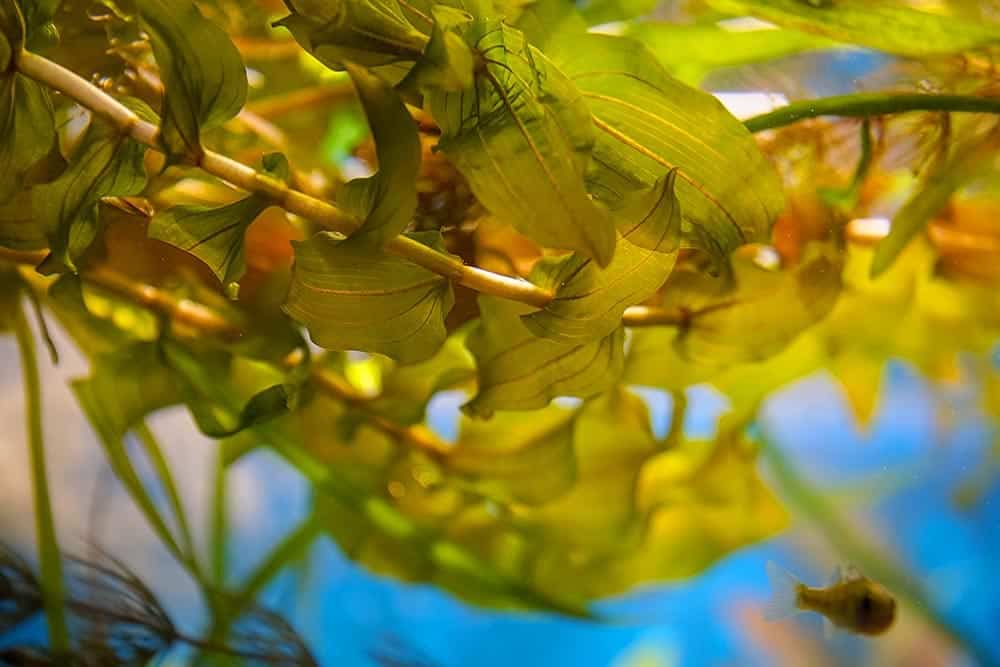
Most abundant in the northern part of the United States, clasping-leaf pondweed is delicate yet invasive. It will keep growing until an entire pond is filled. It has oval, wavy leaves with blunt ends and thin stems that grow underwater.
14. Curly-Leaf Pondweed
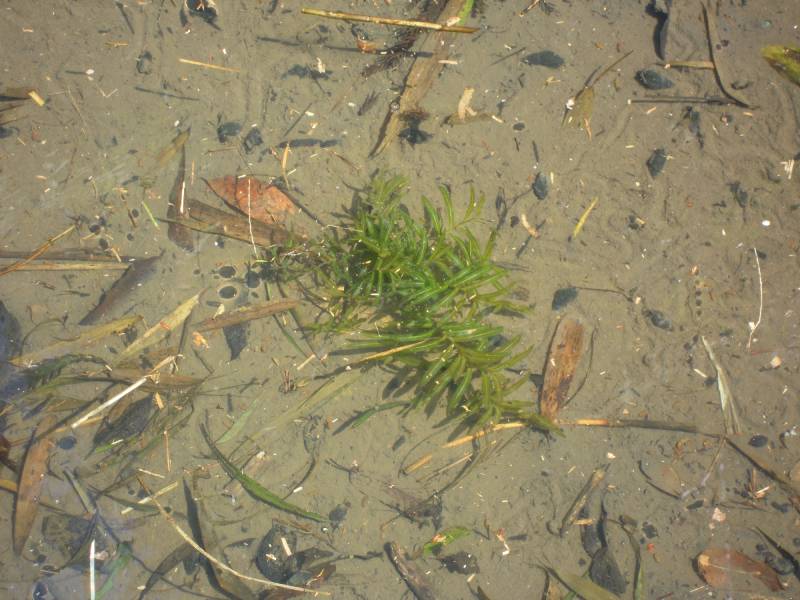
This weed can be easily confused with clasping-leaf pondweed. The difference is that curly-leaf pondweed has rounded leaves with small ridges along the edges instead of smooth, blunt leaves. Flowers usually bloom above the water level during the summer months.
15. Sago Pondweed
Also known as fennel pondweed, this plant can grow alongside other types of plants without taking over if careful management is in place. It serves as a food source for waterfowl to take advantage of and a safe, dense habitat for fish to thrive in.
16. Southern Naiad
This invasive weed grows quickly after being rooted in the bottom of a pond. It can be raked out once it starts growing above the surface, but roots are typically left behind, which results in future infestations. Therefore, a pond infested with southern naiad may require professional cleaning and treating.
17. Phragmites
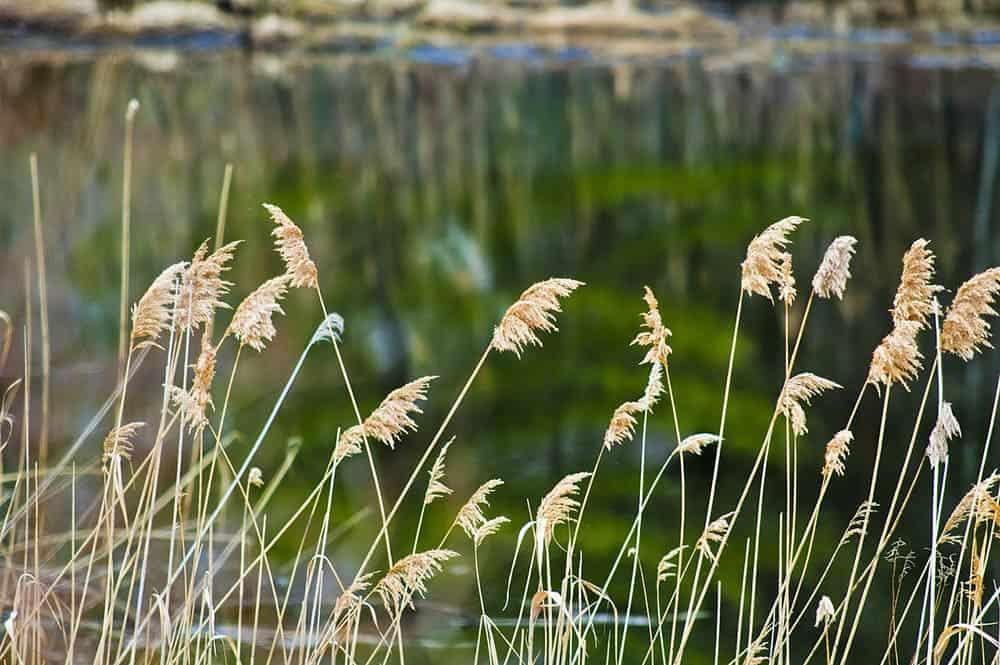
This is a tall-growing weed that quickly chokes out native fish and plant life once established in a pond setting. These are not attractive plants, as they grow brown shaggy heads with no flowers. Phragmites are a fire danger that should be removed as soon as they are spotted.
18. Purple Loosestrife

Although beautiful, purple loosestrife is a perennial plant that invades wetlands and ponds throughout most of North America. It grows impressive purple flowers that stand tall above their stalks. Unfortunately, they are known for quickly overtaking other plant life growing in the same environment.

In Conclusion
Now that you know more about the types of pond weeds that you may come across in the future, you can easily identify them and eradicate them before they become too invasive to deal with. Some of the weeds listed here may be manageable in your pond’s environment, but it is always best to consult with an expert if you are considering keeping a weed around for any reason.
Looking for more tips on your pond? Try:
- 5 Ways to Get Rid of Foam in a Pond (Without Hurting Fish)
- What Do Turtles Eat in a Pond? What You Need to Know!
Featured Image Credit: Pixabay
